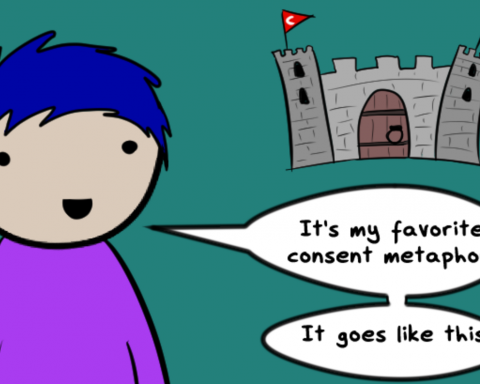Positive and informed consent has become a central tenet of both discourse and policy around healthy relationships and sexual violence prevention programming. But it is much easier to talk about consent, or to reframe “no means no” ideology into “yes means yes,” than it is, in the intimate moments of a sexual interaction, either with a new person or long-term partner, to conduct the necessary check-ins that confirm the one’s consent. Despite our advances, I largely still find our culture’s framing of consent to be problematic by utilizing a language of competition that understands consent as something that one person has, and must be given to, or gotten from, another person. [To read more about an alternative understanding, that consent is collectively built, check out this post.]
With that in mind, this article from TeenVogue, part of their Not Your Fault series, which aims to increase education in the wake of an epidemic of sexual violence, is really excellent. Providing a range of options, scenarios, suggestions for language and action, this article understands that navigating consent amidst a sexual encounter can be tricky and awkward, especially for individuals with less experience. This article is an valuable resource that should be combined with others for individuals and their partners to establish systems that are comfortable for their relationships and interactions.
– Brett Goldberg
Read the article via TeenVogue. Additional articles in the Not Your Fault series can be found here.




